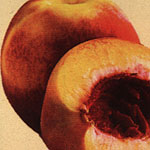
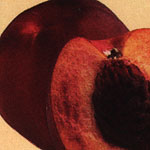
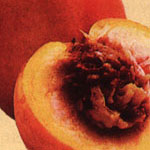
May Grand Red Gold Red Jim
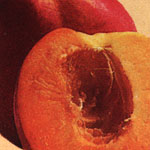
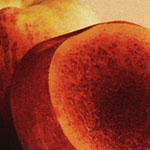
Royal Giant Spring Red Summer Grand
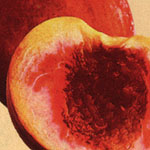
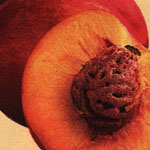
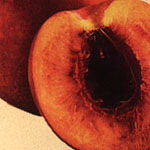
Early Sungrand
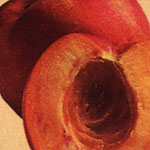
FoodFood InformationFruitDeciduous
The nectarine originated in ancient China. It is botanically classified
as a drupe and is akin to the peach, plum, apricot, and almond. While there
is some difference in opinion among pomologists as to whether the nectarine
is a fuzzless peach, a cross between a peach and a plum, or a distinct variety,
there can be no question that it is one of our finest flavored, most succulent
summer fruits.
Ninety-five percent of our total output is produced in California's San
Joaquin Valley. Their season lasts from May through September. In December,
January, February, and March we import nectarines from Chile, where they
grow the same varieties as we do in California and are getting better at
it each year. Despite the long distance that the Chilean nectarines have
to travel, some of this fruit compares favorably with our finest California
nectarines. As a rule, these imports bring top dollar because they arrive
when there is a dearth of other fresh fruit in the market. The only months
of the year when nectarines are not available in the market are April, October,
and November.
Nectarines were not always as popular as they are today. Until the late
1940s, nectarines that were commonly available were rather drab and pale
green with a red cheek. They were small in size, white in flesh, and clingstone.
They were very juicy and quite tasty with a pleasant tart-sweet flavor,
but had one bad flaw: They were very fragile and tender. Because they bruised
very easily and had a very short shelf life, nectarines were grown on a
very limited scale and shipped locally, random-packed in half-bushel baskets
via unrefrigerated vehicles. Often the fruit was damaged in transit. When
they arrived at the stores, decay set in quickly because of the lack of
proper refrigeration.
Today nectarines are a far cry from those of yesteryear. Their flesh is
golden rather than white. They no longer are fragile, have a long shelf
life, and are carefully hand-picked, pre-cooked, graded by size, packed
in cushion-celled cartons, and shipped to market in refrigerated trucks.
The first golden-fleshed nectarine was developed in Le Grande, California,
and made its debut in 1942. More than one hundred new varieties have been
developed from the original Le Grand, which was a large, not too
colorful clingstone, but its claim to fame was its golden-colored flesh.
The original Le Grand and a later-blooming variety called the Late Le
Grand are still shipped to market, but since the newer varieties have
better color and flavor and are superior in yield per acre, the Le Grands
are being phased out.
Domestically grown nectarines are now in season for five months of the year.
The California season is kicked off early in May with the arrival of the
Armking variety. While this variety isn't nearly as good as some
of the later-blooming varieties that follow, the Armkings are in great demand
and are usually quite costly as a reward for their early arrival. In the
month of June, far better flavored, juicier nectarines sell for half the
price of the Armkings, so it may pay to wait. The last arrival of California
nectarines are also not quite up to the quality of the ones in the market
in June, July, and August. However, in September there are some superb nectarines
from Pennsylvania and Washington State that are as good as any produced
in California.
The flavor peak of season for nectarines is June and July. The varieties
that arrive then are freestone and are sweeter, juicier, and more flavorful
than the clingstone varieties that come to market in August and September.
Although a few undersized nectarines from Florida and Georgia precede the
earliest arrivals from California, they are at best only fair in quality.
South Carolina, which grows some of our finest peaches, has an emerging
crop.
The different varieties are not identified at the retail outlets. However,
for the record, the best varieties are freestone and arrive in June and
July. In order of arrival they are Early Sun Grands, Firebrights,
Independence, Sun Grand, Moon Grand, Flavor Top, and Fantasia.
They are replaced in mid-August by the clingstone varieties which, although
they have better size, aren't quite as tasty and juicy. These include Red
Grand Le Grand (the granddaddy of them all), Gold King, Late Le Grand,
and September Grands.
Thanks to experimental work by growers and agricultural schools we have
countless new varieties of nectarines. Of all the fruits that have been
tinkered with, by far the best results have been achieved with this one.
The improved nectarines capture a larger share of the summer-fruit market
every year. People in the produce industry predict that by the year 2000
the nectarine will have surpassed the peach as our number one stone fruit.
As superb as the nectarines that you purchase in the peak of season are,
they don't quite compare with the flavor and succulence of those that are
tree-ripened. However, a tree-ripened nectarine is too fragile and delicate
to ship around the corner, let alone across the country.
When shopping for nectarines, select those that are highly colored, velvet-skinned,
not bruised, and unblemished. Buy them while they are quite firm and allow
them a day or two to ripen at room temperature. When they are ripe, and
not before, store them in the refrigerator. Chances are that if you purchase
ready to eat nectarines they may be bruised. Size doesn't play too important
a role as a clue to quality, but the medium-sized fruit are usually the
best buy. Do avoid very small fruit because they may have been picked before
reaching maturity. Oversized fruit are more apt to be bruised and nearly
always carry a higher price tag.









WHEN TO BUY: At peak: (from United States): June, July, and August At
peak from Chile): February and March
WHAT TO LOOK FOR: Colorful, not bruised, medium- to large-sized fruit
HOW TO STORE: Ripen at room temperature; refrigerate when ready to eat
Deamer 5/97